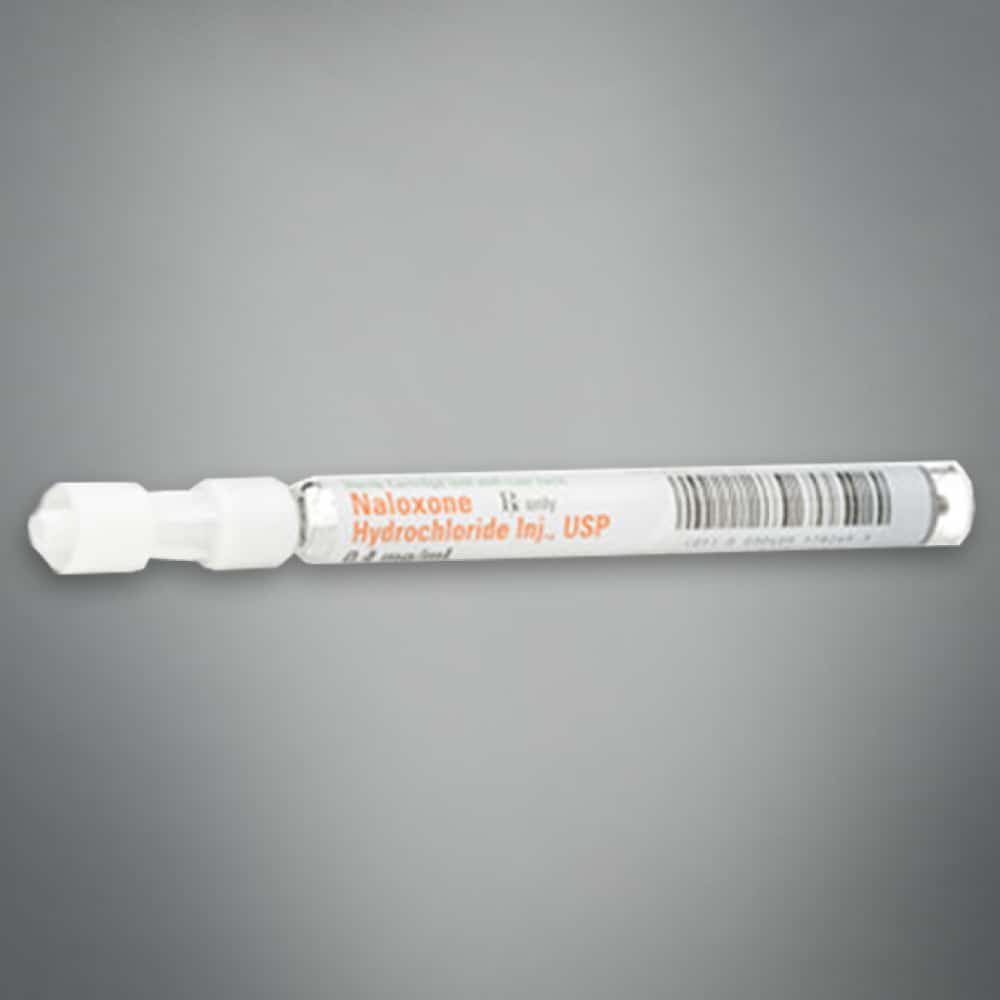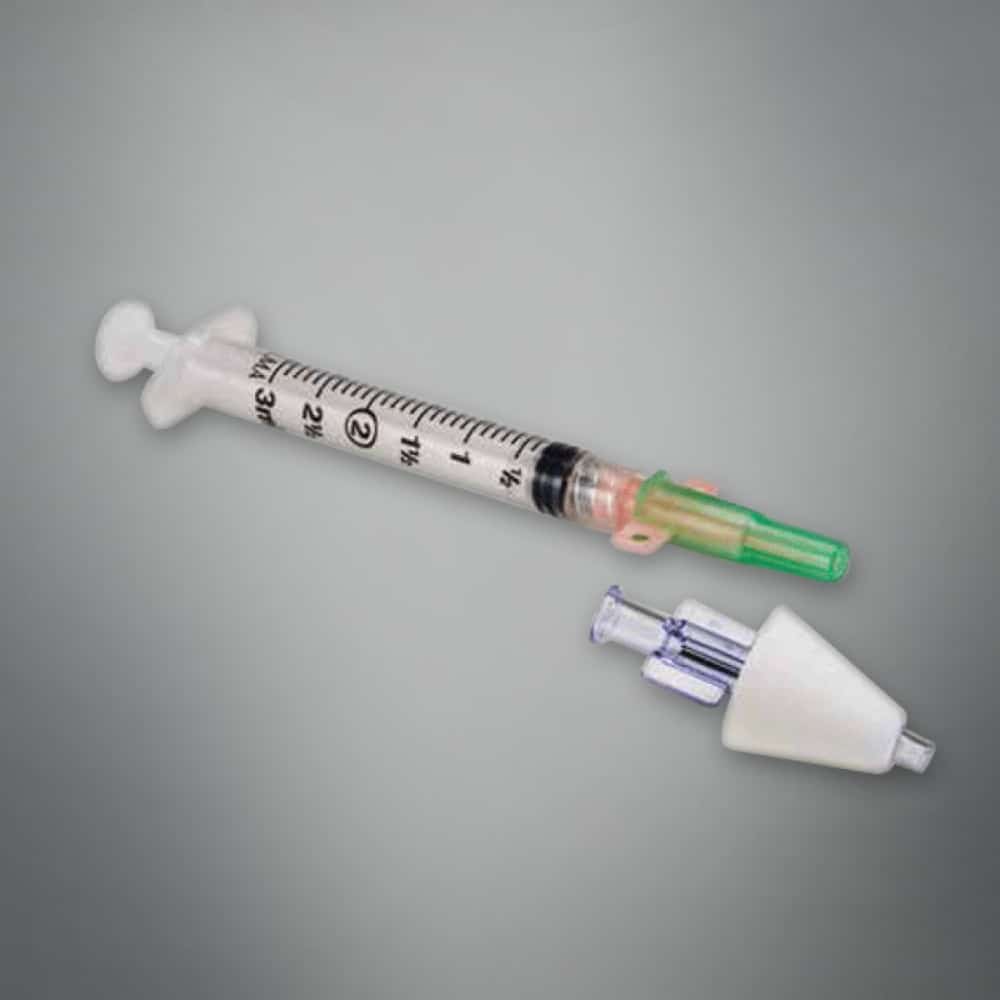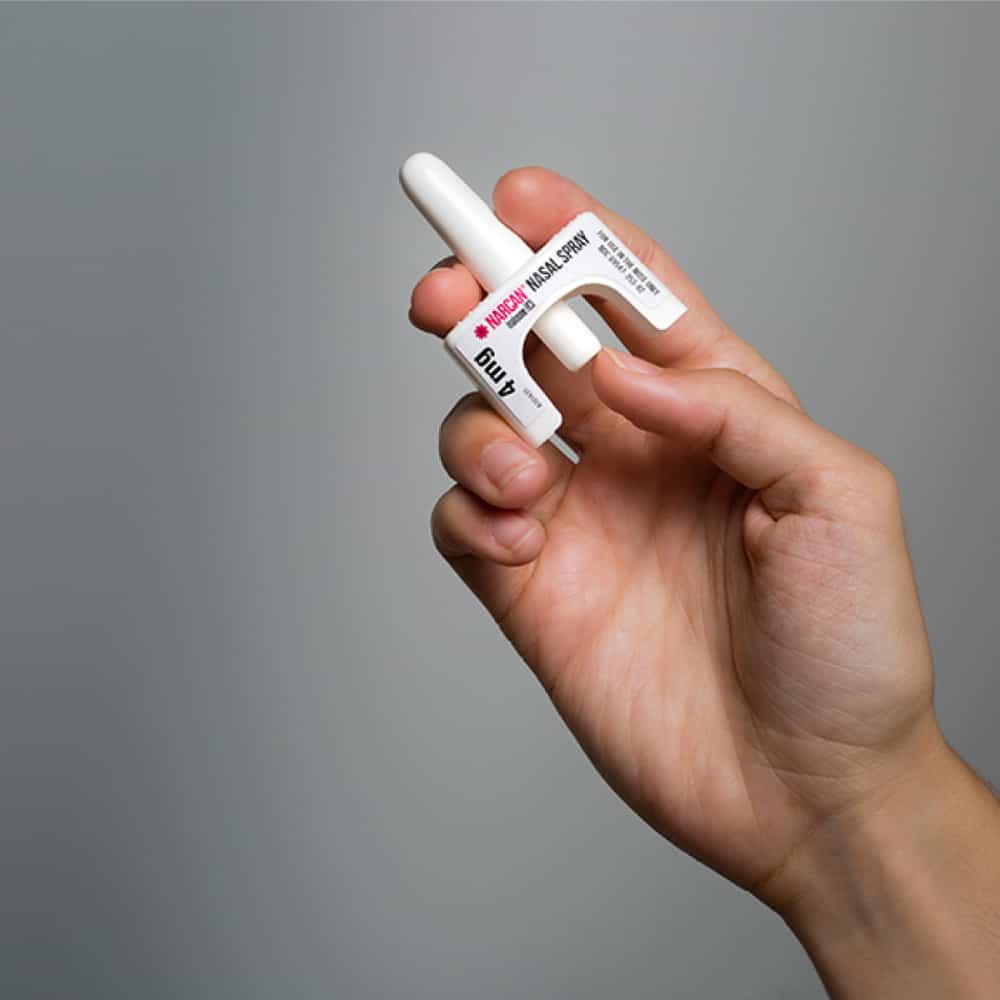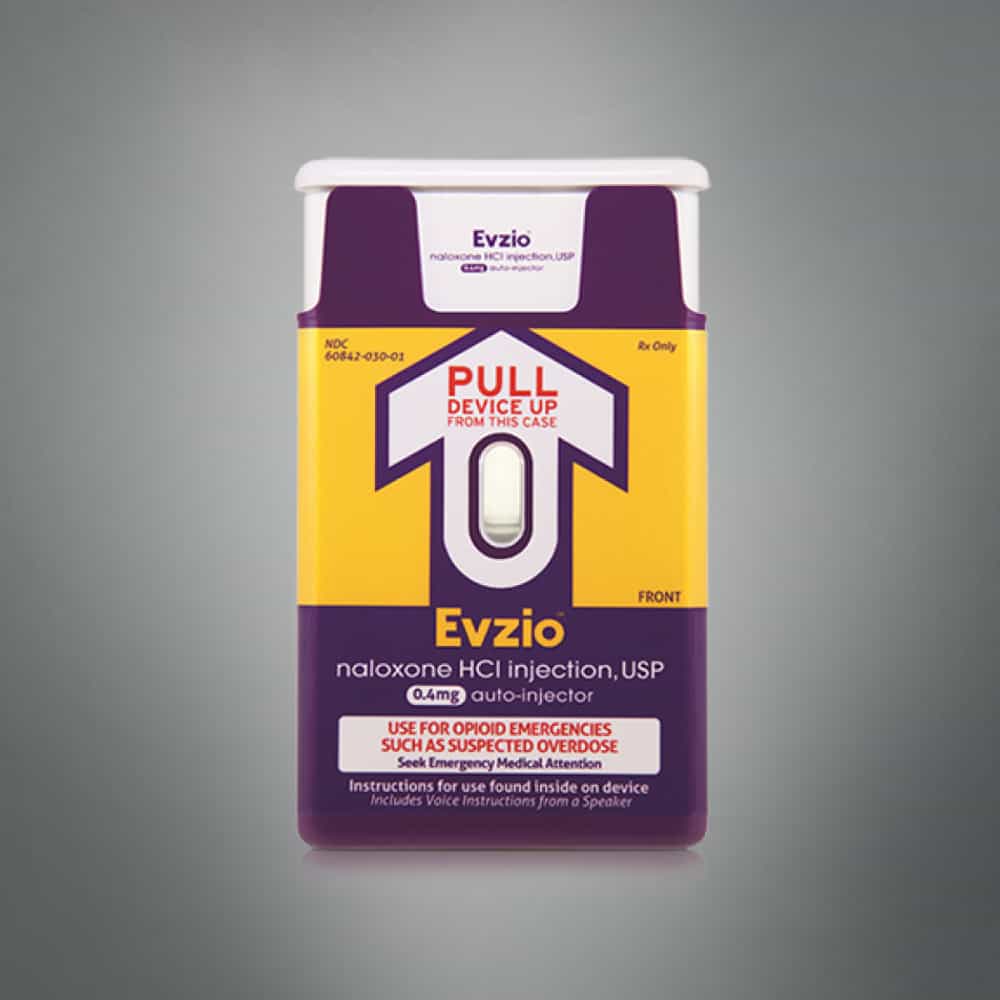What is Naloxone?
Naloxone (also known by brand names Narcan® and Evzio®) is the medication historically used in hospitals and ambulances to reverse opioid overdose and keep people alive. Opioids are pain medications (like Vicodin, OxyContin, morphine, methadone, fentanyl, Percocet, Opana) and heroin.
Naloxone is only effective for opioid overdoses. It cannot reverse an overdose from alcohol, benzodiazepines, cocaine, or other drugs if opioids are not present. But since most overdose deaths involve opioids, it is an important rescue medication.
Naloxone is very safe. Giving naloxone to someone who has not taken opioids will not harm them, so it is routinely used whenever overdose is suspected.
What Does Naloxone Look Like?
Naloxone is available in four common formulations.
Injectable

This type is the least expensive and is easy to use, but involves a syringe injection.
Multi-Step Nasal Spray

This type does not require a needle, but is a little more complicated to assemble.
Single-Step Nasal Spray

This is an easier-to-assemble intranasal formulation.
Auto-Injector

This auto-injector is very easy to administer and is very durable, but can be expensive if your insurance doesn’t cover it.
Note that the use of any naloxone formulation can cause the overdose victim to experience opioid withdrawal symptoms. These are usually not serious health concerns.
Who Can Access Naloxone?
In Pennsylvania, naloxone is available by prescription to anyone who uses opioids themselves and also to “bystanders,” A bystander is a person in a position to assist a person having an opioid overdose. That includes friends or family members of opioid users, people who work in places with public restrooms, Uber drivers—basically, anyone.
How to Get Naloxone
Naloxone is a prescription medication, but many states have passed laws making it available by a “standing order” prescription. This is much like getting a vaccine at a pharmacy: it is still “prescribed,” but you don’t have to see your doctor first in order to get it.
In Pennsylvania, the state Physician General has written a standing order that any pharmacy can use, so you should be able to go into any pharmacy and pay for naloxone yourself or have it billed to your insurance.
Pharmacies: Not all pharmacies carry naloxone or participate in the standing order. Call your local pharmacist and ask them if they have it before you go. If the pharmacy doesn’t have it in stock, they may be willing to order it.
Insurance: Many insurance carriers, including Medical Assistance, cover naloxone. However, be aware that insurance reimbursement may be different depending on which type of formulation you receive (e.g., injectable, intranasal). Your insurance reimbursement may also differ according to who the naloxone is intended for—you or another person. Your insurance benefits manager can explain these reimbursement differences.
The Bottom Line: The law that permits bystanders to obtain naloxone in Pennsylvania (Act 139 of 2014) is relatively new, which means that some pharmacies and insurance carriers may not be up to speed. Not all Pennsylvanians are able to obtain naloxone smoothly, a fact that is changing as providers and payers become more familiar with the law.
Other Ways to Get Naloxone
Some community organizations provide naloxone at no cost to people who may need it, including:
Additional Online Information
Training and More Information
Anyone interested in obtaining naloxone should learn how to use it. Simple trainings are available online at no cost. For more information about naloxone or overdose prevention in Pennsylvania, contact your Single County Authority agency.


